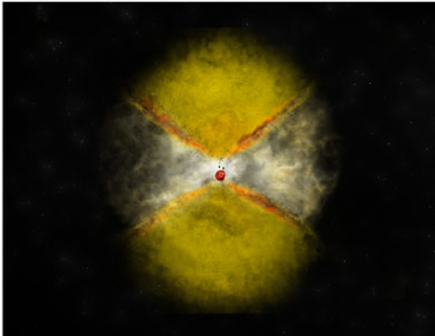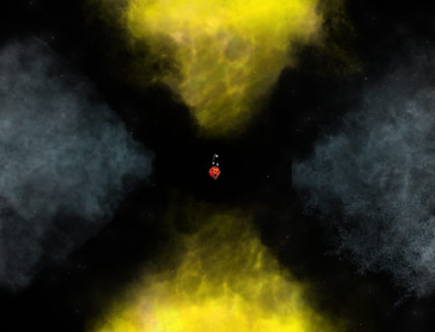Astronomers have been able to look directly into the heart of an exploding star for the first time in history, Manchester University have revealed.
Led by Michigan State and the University of Manchester, astronomers used radio telescopes from across Europe and America to pinpoint the locations where a stellar explosion, called a nova, occurred.
A nova occurs in a star that is part of a binary system, where two stars orbit one another.
When a nova happens, the star emits gamma rays, the most powerful form of radioactive waves known in the universe.
Astronomers used these rays to produce highly-detailed images, and the discovery also revealed how the gamma-ray emissions are produced, something which left astronomers baffled since they were first observed in 2012.

PHENOMENON: Nova’s emmit the most powerful form of radioactive waves known in the universe
“A nova occurs when gas from a companion star falls onto the surface of a white dwarf star in binary system,” said Tim O’Brien, from the University of Manchester’s Jodrell Bank Observatory.
“This triggers a thermonuclear explosion on the surface of the star which blasts the gas into space at speeds of millions of miles per hour.
“When it explodes it brightens hugely, leading in some cases to the appearance of a new star in the sky, hence the term nova.
“These explosions are unpredictable, so when one goes off, the pressure is on for us to try and get as many of the world’s telescopes as possible to take a look before it fades away.
“For this nova, our international team was primed and ready to go and we really came up trumps.”
Astronomers believe the gamma rays were emitted from an explosion from a system called V959 Mon, some 6500 light-years from Earth.
This activity was first detected in 2012 by NASA’s Fermi Gamma-ray Space Telescope.

BREAKTHROUGH: The discovery could pave the way for better understanding
Gamma rays from several nova explosions have now been detected so astronomers now believe the phenomenon may be more common than originally thought, but perhaps seen only when the nova is close enough to Earth.
“We not only found where the gamma rays came from, but also got a look at a previously-unseen scenario that may be common in other nova explosions,” said Laura Chomiuk, of Michigan State University.
“By watching this system over time and seeing how the pattern of radio emission changed, then tracing the movements of the knots, we saw the exact behaviour expected from this scenario,” Chomiuk said.
Because this type of ejection is also seen in other binary-star systems, the research may help astronomers understand how those systems develop.
“We may be able to use novae as a ‘testbed’ for improving our understanding of this critical stage of binary evolution,” Chomiuk said.
All images courtesy of Bill Saxton NRAQ AUI NSF, WITH thanks.



